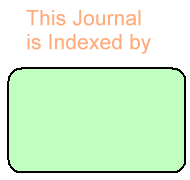Patience N Ugwu1,
Fabian I Eze2,3 ![]() ,
Vincent O Chukwube1,
Chinonso E Mgbeokwere1,
David O Ezenwanne1,
Charity C Ezea4,
Eleje O Okonta1,
Estella U Odo1
,
Vincent O Chukwube1,
Chinonso E Mgbeokwere1,
David O Ezenwanne1,
Charity C Ezea4,
Eleje O Okonta1,
Estella U Odo1
For correspondence:- Fabian Eze Email: fabian.eze@unn.edu.ng Tel:+234-8064714208
Received: 28 January 2025 Accepted: 14 April 2025 Published: 07 May 2025
Citation: Ugwu PN, Eze FI, Chukwube VO, Mgbeokwere CE, Ezenwanne DO, Ezea CC, et al. Pharmacognostic, phytochemical, antioxidant and toxicological properties of aqueous extract of Telfairia occidentalis Hook. F. leaves. Trop J Pharm Res 2025; 24(4):529-537 doi: https://dx.doi.org/10.4314/tjpr.v24i4.10
© 2025 The authors.
This is an Open Access article that uses a funding model which does not charge readers or their institutions for access and distributed under the terms of the Creative Commons Attribution License (http://creativecommons.org/licenses/by/4.0) and the Budapest Open Access Initiative (http://www.budapestopenaccessinitiative.org/read), which permit unrestricted use, distribution, and reproduction in any medium, provided the original work is properly credited..
Purpose: To determine the phytochemical composition, toxicological profile, pharmacognostic and therapeutic potential of aqueous extract of Telfairia occidentalis (T. occidentalis) in phenylhydrazine-induced oxidative stress in Wistar rats. Methods: The pharmacognostic and phytochemical parameters were assessed using established analytical standards. Acute toxicity study (LD50) was evaluated on Wistar rats using Lorke’s method, while the subacute toxicity was conducted using liver markers (aspartate aminotransferase (AST), alanine aminotransferase (ALT) and alkaline phosphatase (ALP)) and kidney function tests (creatinine, uric acid, and urea). Furthermore, antioxidant activity was investigated by spectrophotometrically monitoring stress markers (malondialdehyde, superoxide dismutase, glutathione peroxidase and catalase activity in vivo. Results: Aqueous extract of T. occidentalis at 100 - 400 mg/kg significantly reduced stress markers compared to non-treated group, surpassing standard Orheptal at 50 mg/kg (p < 0.05). The extract showed very high LD50 (> 5000 mg/kg) with no marked adverse effect on hepatic and renal functions. Phenolic content was highest in the extract (30.673 mg/g). Conclusion: Aqueous extract of T. occidentalis reduces oxidative stress, thus highlighting its promising role as a natural blood tonic and antioxidant. The high number of phenolic compounds in T. occidentalis is largely responsible for its activities
Archives


News Updates